Yushi Jing
Visual Discovery at Pinterest
Mar 25, 2017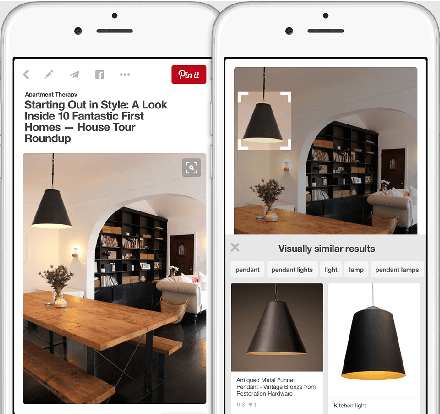
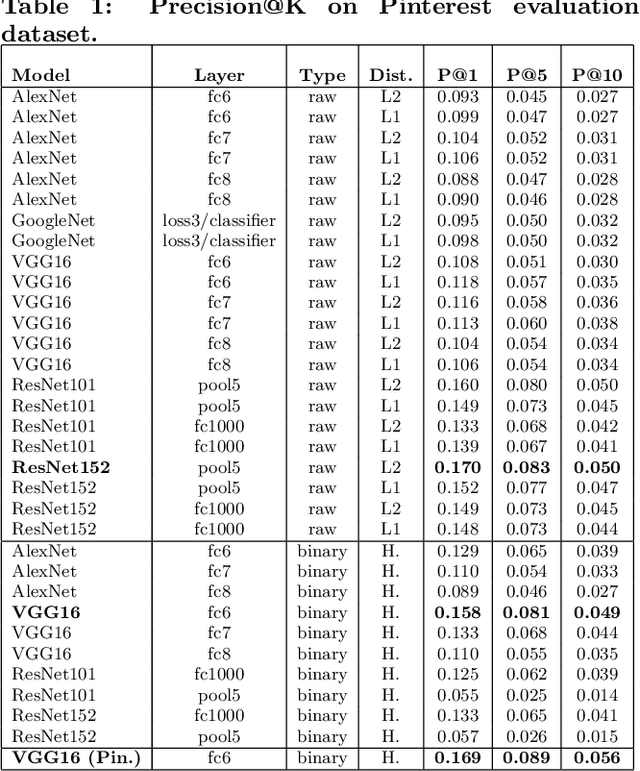
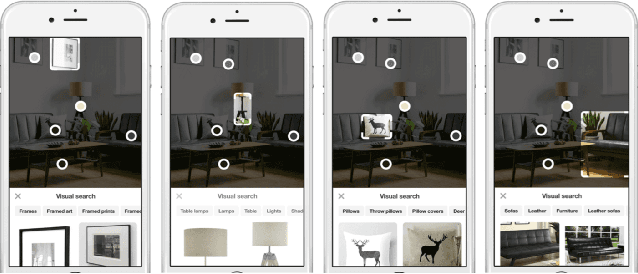

Abstract:Over the past three years Pinterest has experimented with several visual search and recommendation services, including Related Pins (2014), Similar Looks (2015), Flashlight (2016) and Lens (2017). This paper presents an overview of our visual discovery engine powering these services, and shares the rationales behind our technical and product decisions such as the use of object detection and interactive user interfaces. We conclude that this visual discovery engine significantly improves engagement in both search and recommendation tasks.
Visual Search at Pinterest
Mar 08, 2017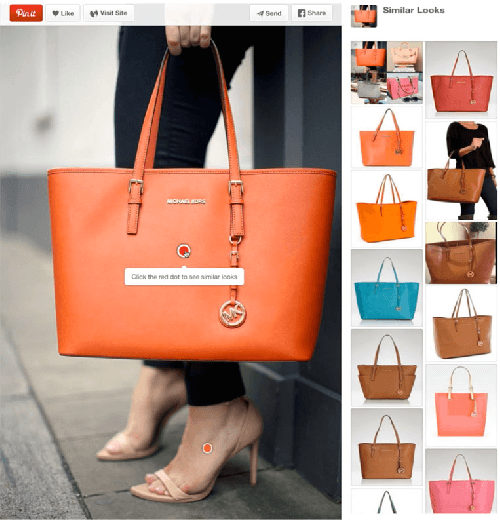
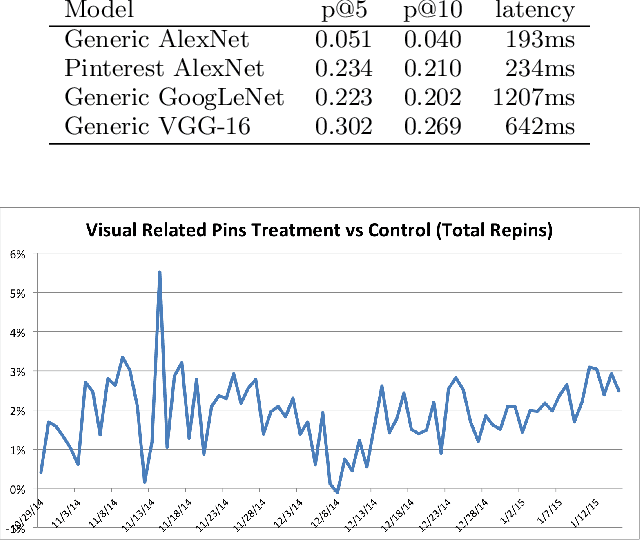
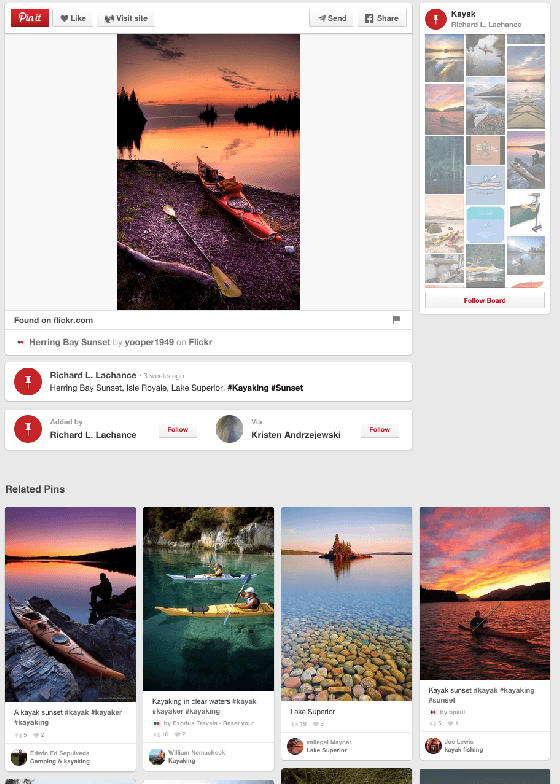
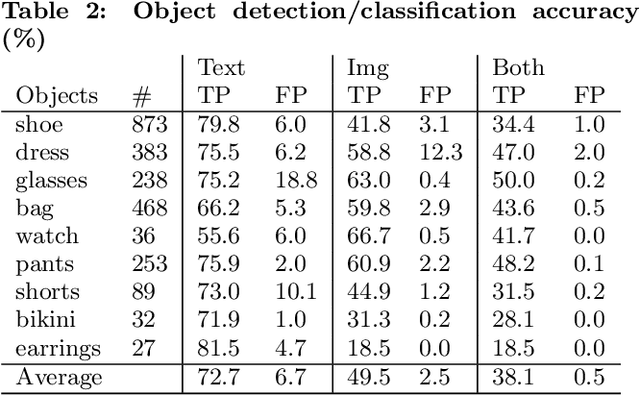
Abstract:We demonstrate that, with the availability of distributed computation platforms such as Amazon Web Services and open-source tools, it is possible for a small engineering team to build, launch and maintain a cost-effective, large-scale visual search system with widely available tools. We also demonstrate, through a comprehensive set of live experiments at Pinterest, that content recommendation powered by visual search improve user engagement. By sharing our implementation details and the experiences learned from launching a commercial visual search engines from scratch, we hope visual search are more widely incorporated into today's commercial applications.
Training and Evaluating Multimodal Word Embeddings with Large-scale Web Annotated Images
Nov 24, 2016



Abstract:In this paper, we focus on training and evaluating effective word embeddings with both text and visual information. More specifically, we introduce a large-scale dataset with 300 million sentences describing over 40 million images crawled and downloaded from publicly available Pins (i.e. an image with sentence descriptions uploaded by users) on Pinterest. This dataset is more than 200 times larger than MS COCO, the standard large-scale image dataset with sentence descriptions. In addition, we construct an evaluation dataset to directly assess the effectiveness of word embeddings in terms of finding semantically similar or related words and phrases. The word/phrase pairs in this evaluation dataset are collected from the click data with millions of users in an image search system, thus contain rich semantic relationships. Based on these datasets, we propose and compare several Recurrent Neural Networks (RNNs) based multimodal (text and image) models. Experiments show that our model benefits from incorporating the visual information into the word embeddings, and a weight sharing strategy is crucial for learning such multimodal embeddings. The project page is: http://www.stat.ucla.edu/~junhua.mao/multimodal_embedding.html
Human Curation and Convnets: Powering Item-to-Item Recommendations on Pinterest
Nov 12, 2015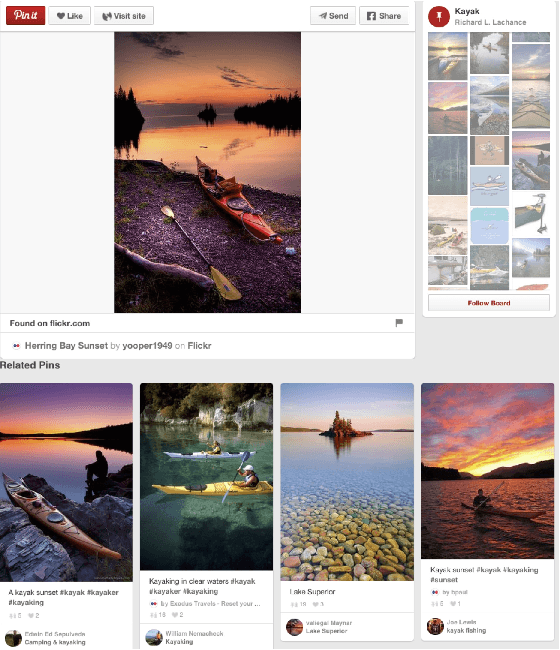
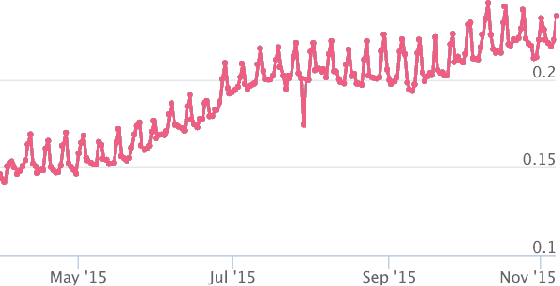
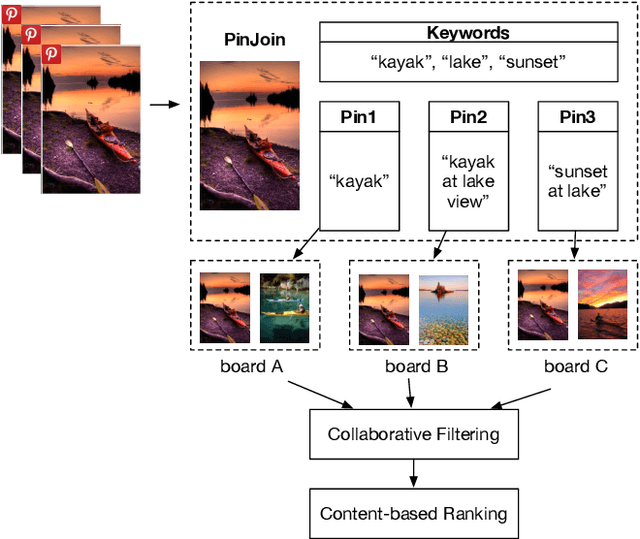

Abstract:This paper presents Pinterest Related Pins, an item-to-item recommendation system that combines collaborative filtering with content-based ranking. We demonstrate that signals derived from user curation, the activity of users organizing content, are highly effective when used in conjunction with content-based ranking. This paper also demonstrates the effectiveness of visual features, such as image or object representations learned from convnets, in improving the user engagement rate of our item-to-item recommendation system.
 Add to Chrome
Add to Chrome Add to Firefox
Add to Firefox Add to Edge
Add to Edge